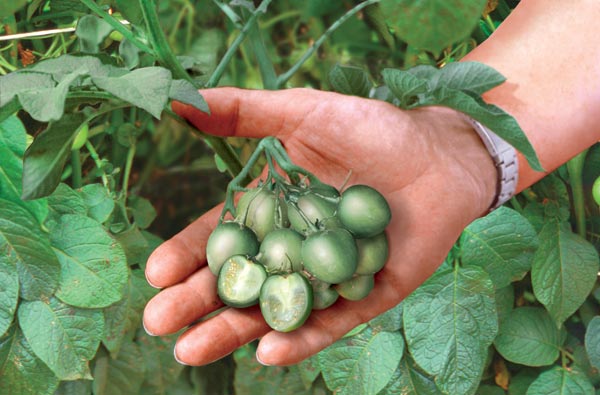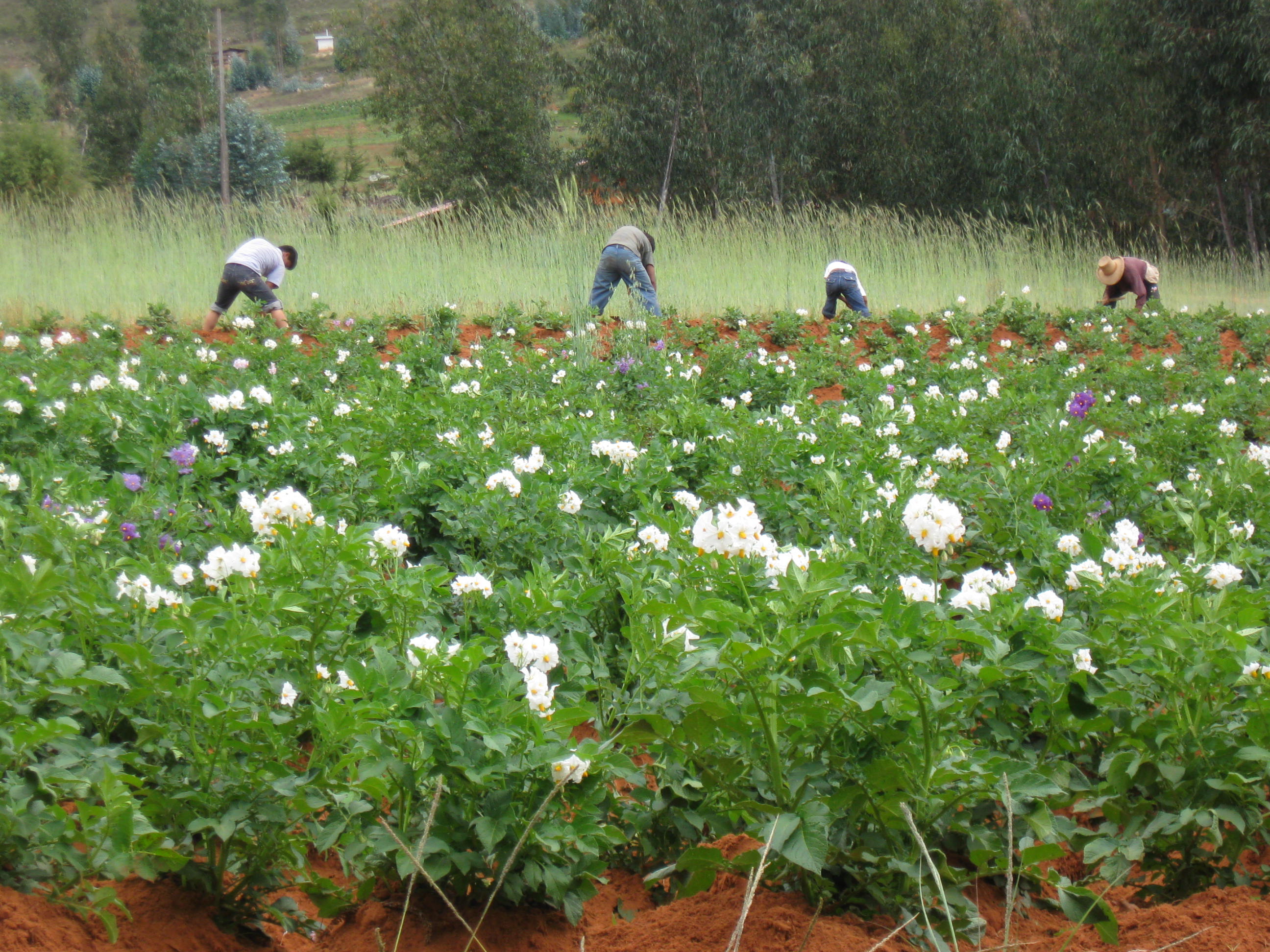- Culturally valuable minority crops provide a succession of floral resources for flower visitors in traditional orchard gardens. Proper gardens better for pollinators than unmanaged plots.
- Trends in access of plant biodiversity data revealed by Google Analytics. No impact of social media on the use of plant data, and the future is mobiles.
- Worldwide Genetic Diversity for Mineral Element Concentrations in Rice Grain. Most, though not all, elements showed high heritability, which is good news for breeders.
- Agriculture facilitated permanent human occupation of the Tibetan Plateau after 3600 BP. No barley, no Tibetans.
- Seed fates in crop-wild hybrid sunflowers: crop allele and maternal effects. Having wild mothers helps wild-crop hybrids survive in the wild.
- Coconut (Cocos nucifera l.) pollen cryopreservation. Eureka!
- The evolution of seed dormancy: environmental cues, evolutionary hubs, and diversification of the seed plants. More dormancy, more speciation.
- The evolutionary ecology of C4 plants. C4 opens new niches, but it’s all a matter of contingency and you have to follow the whole evolutionary history of a group to understand its current ecological strategy.
- A Minor Role for Environmental Adaptation in Local–Scale Maize Landrace Distribution: Results from a Common Garden Experiment in Oaxaca, Mexico. It’s the social factors, stupid.
- Crop immunity against viruses: outcomes and future challenges. PAMP (pathogen-associated molecular patterns)-triggered immunity (PTI) may be the future.
A natural experiment with Peruvian potatoes
Potatoes are generally propagated vegetatively, by planting tubers. In English, these tubers used for planting are, unfortunately, referred to as seed, which they obviously aren’t, at least not in the botanical sense. Potato breeders use sexual reproduction and the resulting real seeds (extracted from the tomato-like potato fruits) to generate new varieties. The fabled potato diversity of the Andes probably originated from seeds arising from spontaneous crosses among landraces and with their wild relatives, and alert farmers that kept some of the offspring occurring in their fields. But when and where were Andean potato varieties formed? And is this type of evolution still going on?
Marc Ghislain and colleagues 1 took advantage of a natural experiment in Peru to investigate whether new varieties have arisen from crosses between ‘Yungay’, and other varieties. Yungay 2 is one of the varieties of the famous Peruvian potato researcher Carlos Ochoa, produced by crossing native and exotic potatoes (from Europe, the USA, and Chiloe). Because it is genetically rather distinct from native Peruvian varieties (here is its pedigree), Ghislain and colleagues were able to use genetic markers (SSRs, in fact) to determine if a given potato variety in a farmer’s field might be an offspring of Yungay.
They looked at the DNA of 1771 leaf samples from more than 400 potato varieties growing in areas where Yungay is also grown. None of the potatoes sampled could plausibly be identified as a descendant of Yungay.
The authors’ motive was to find out whether transgenes from genetically modified potatoes might ‘pollute’ native diversity. I am more interested in the question of whether farmers are still finding, keeping and spreading new varieties from spontaneous seedlings. That would seem likely, but there appears to be no good evidence that they do so. We know that hybridization among potato cultivars, and with wild species, occurs under field conditions, but what happens to the offspring? Ghislain and his colleagues suggest that hybrids may not be adapted, and thus die off, citing research carried out in the rather unforgiving climate of Puno, and that farmers discard hybrids because they prize the quality of native varieties. But I am not convinced by that argument. Clearly, many hybrids will not make the cut, as in any breeding program, but some novelty must surely be of interest to local farmers, as it obviously has been in the past.
Is keeping new potato varieties a cultural practice that has been lost? And are most current native potato varieties therefore old, perhaps very old? Or is the process still going on, perhaps even at a similar rate as before, but the chance of detecting it is small? I wonder if there is some sort of clock that can be used to measure how old a variety is. After all, a variety is really an individual clonally propagated plant. And some potato varieties are thus of course much larger organisms than those molds that occasionally hit the headlines; each year there are about 10,000 ha of Russet Burbank in the USA alone.
Unless there is simply something wrong with Yungay’s offspring (which would make it a bad variety to use for this type of research), my guess is that there are hybrids with Yungay out there, but not many, and that they are just very hard to find. Only very few novel varieties may be good enough to spread beyond a farm to a much larger area, such that we are likely to detect them. But a transgene hybrid could have better odds than most.
Brainfood: Daniel Zohary, Blue dates, Crop diversification, Tunisian oases, Cranberry diversity, Drought breeding, Seed-use watermelon, Cattle history, Apple conservation
- Daniel Zohary: Geneticist and Explorer of Plant Domestication. Nice profile of iconic explorer of agricultural biodiversity.
- The date palm with blue dates Phoenix senegalensis André (Arecaceae): A horticultural enigma is solved. A variety of P. canariensis, as it turns out.
- Crop diversification as a smallholder livelihood strategy within semi-arid agricultural systems near Mount Kenya. It will work better at higher elevations.
- Change of oases farming systems and their effects on vegetable species diversity: Case of oasian agro-systems of Nefzaoua (South of Tunisia). Not working at all in oases.
- Clonal diversity and genetic differentiation revealed by SSR markers in wild Vaccinium macrocarpon and Vaccinium oxycoccos. Cranberries have much more variation than previously thought.
- Two decades of InterDrought conferences: are we bridging the genotype-to-phenotype gap? Yes, slowly, but genomics will help. Eventually.
- Microsatellite Marker-based Genetic Diversity of Seed-use Watermelon (Citrullus lanatus ssp. vulgaris var. megalaspermus Lin et Chao) Collections. They’re all very similar.
- On the History of Cattle Genetic Resources. The loss of breeds adapted to local conditions and extensive management are the main threats to the genetic diversity amassed over the past 12,000 years.
- The vulnerability of US apple (Malus) genetic resources. Could be worse. Could be better.
Nibbles: Quasilocavore, Returning potatoes, Singapore veggies, Floating gardens, Timber trees, Allanblackia, Cranberry glut, Wild turkeys
- Sure, eat locally. But not too much.
- Andean farmers don’t have much of a choice about eating locally, but at least now they have more potato varieties to choose from.
- Growing your own is about as local as you can get in Singapore.
- Maybe they should do it the Bangladeshi way.
- A list of the world’s commercial timber trees (pdf). Can’t help thinking they should have made more of this.
- Which doesn’t include Allanblackia.
- Let them eat cranberries.
- Wild turkey with that?
Nibbles: R&D, Cheese double, Cali candied yams, Sustainable joe, Soy & deforestation, Cereals in Sudan, Big Ag, History of breeding
- ASTI says agricultural research investment in Africa is bearing fruit and needs to double.
- There’s a cheese revolution going on in America’s heartland.
- Meanwhile, the UK is worried about fake goat cheese.
- “Apparently, Californians like well-tanned sweetpotatoes.” Well of course they do.
- Good coffee AND conservation? I’ll take it.
- Soy AND conservation in Brazil? Well, not quite, but good news nonetheless.
- Cereal cultivation in Sudan pushed back several hundred years.
- What are the conditions for success in large-scale agricultural initiatives? You tell them.
- The history of crop improvement 101.

